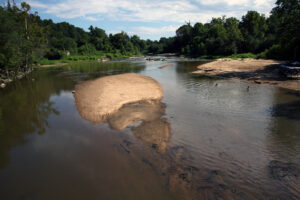News
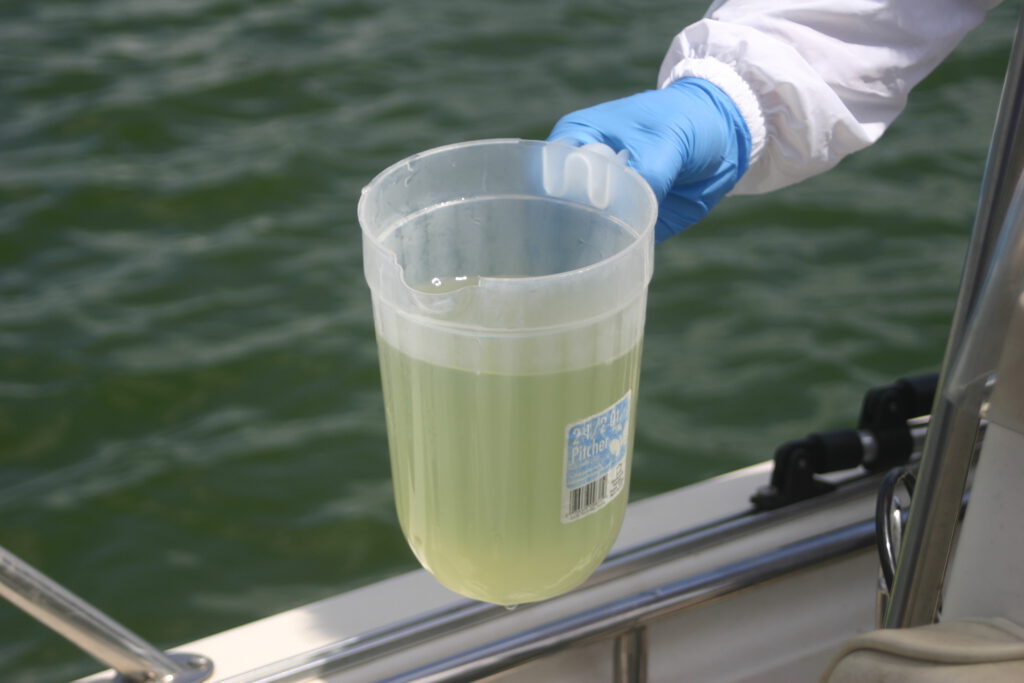
Call it a perfect storm. Three important variables led to a river more green than anyone has seen in decades; some say even as far back as the 1930’s.
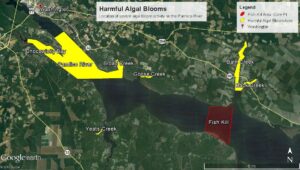
1) A very wet winter and spring.
This winter and spring saw above average rainfall that resulted in two important river conditions that led to this summer’s blue-green algal blooms that turned the Pamlico River green. The first created a very fresh Pamlico River. So fresh that a freshwater aquatic plant (celery) grew in abundance along the shores to the Pungo River. The fresh water conditions allowed for types of algae to grow in the Pamlico that you would normally see in locations like Falls Lake in Raleigh, not in the Pamlico. The second factor is that all this rain brought with it a large load of nutrients, mainly nitrogen and phosphorus, that feed algae.
2) A very, very hot summer
Yes, it’s been hot, hot, hot! Another record summer for global temperatures. Algae love heat!
3) A dry and still summer with little wind or major storms
Spring Rain + Heat & Sun + Slow Moving Water = Algal Bloom
Simple math and in return a green Pamlico River.
Algae 101
There are numerous types of algae that grow naturally in the Pamlico River and Creeks. Some algae prefer freshwater, some prefer saltier conditions. All can cause problems when conditions are right and they grow out of control (bloom). When algae bloom like they did this summer, they essentially choke out other life in the river. When the algae die, they sink to the bottom of the river and can cause very low oxygen water that result, at times, in fish kills.
How can you tell there is an algal bloom occurring?
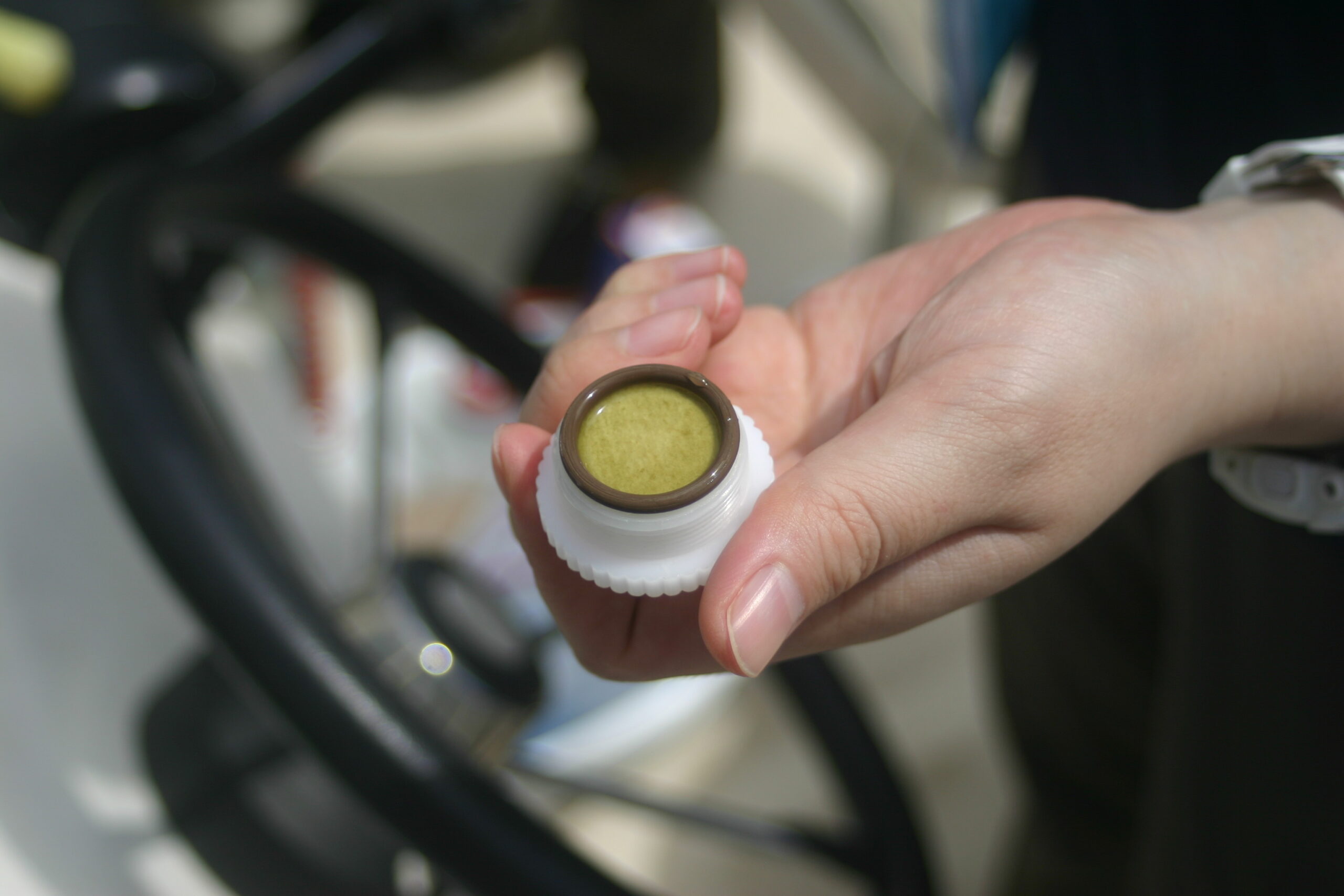
Sound Rivers staff use water quality meters to assess an area and determine if an algal bloom is occurring. At times you can see the bloom (green or very cloudy, brown water). However, most times you cannot see an algal bloom. Our meters will detect high amounts of oxygen (super-saturated conditions) that tell us algae are there and producing oxygen, as all plants do during the day. Secondly, the pH of the water rises above 8.5. Through a process called photosynthesis, plants remove carbon dioxide (CO2) from the water and expel oxygen (O2) into the water. Since CO2 becomes carbonic acid (low pH) when it dissolves in water, the removal of CO2 results in a higher pH, and the water becomes more alkaline, or basic (source: NOAA). During the height of the algal bloom, pH was recorded above 10, an extremely high pH for rivers (normal water conditions are typically no higher than 8.5 in estuarine waters).
Is it safe to swim?
There are certain types of algae, categorized as harmful algal blooms, that can release toxins and pose a public health hazard. Generally speaking, this is a rare occurrence. However, due to the possible public health dangers and since the river cannot be monitored 24 hours a day, we recommend that if you see green or discolored water and/or you notice dead or dying fish in the area, it is best to avoid contact with the water. It is okay to boat there, but avoid swimming, skiing or other activities where you could ingest river water or have long exposure to your skin (dipping your hands in to grab a fish off the line is not generally a concern). Even if algae are not producing toxins, when the river is green it can mean the algae are in such abundance they can irritate your skin. Learn more to keep your family safe.
Will the River Turn Green Again?
The short answer: Yes. With a warming climate, changing rainfall patterns, a growing state, and more nutrient pollution we are very likely to not only see a green river again in the near future, but to see it more often. However, we can control our future and determine the type of Pamlico River we’ll have over the next several decades. If we want to be able to have a river where we can swim and fish without worrying about our health or that of our children, then here are a number of things we can do to ensure a healthy river.
- Tell your elected officials that clean water is important to you and to support budget increases for our state regulatory and monitoring agencies.
- Support North Carolina clean water rules and standards that share the burden of nutrient control across all sources (towns, counties, farms, industrial animal operations, developers).
- Consider a rain garden for your lawn or business to reduce nutrient pollution from stormwater runoff.
- Check your septic tank on a regular schedule to help maintain its function and reduce your nutrient pollution footprint.
- Clean up after your pets. Get the poop out!
- Consider allowing natural vegetation to grow up along a stream, ditch or other water conveyance on your property. Tips for planting.
- Read more for additional clean water tips from EPA.
Recent Media Stories
WRAL: Expert: Large algae bloom in the Pamlico River perfect storm of rain and heat.
Related News
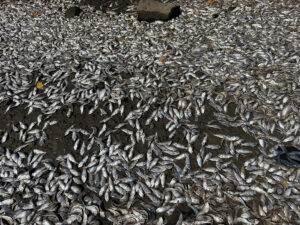
Neuse fish kill expected to extend beyond holiday weekend
July 3rd 2025
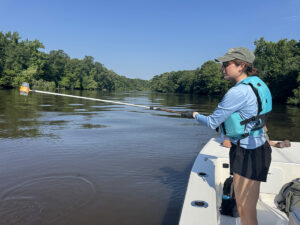
Swim Guide fails prompt Maple Cypress investigation
July 3rd 2025

Riverkeeper, town partners root out source of Smithfield sediment pollution
July 3rd 2025
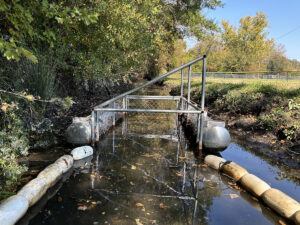
Trash trap No. 12 approved for Smithfield
July 3rd 2025

Sunset River Paddle fundraiser boosts Water Quality Fund
July 3rd 2025

Riverkeepers host quarterly Water Watch meeting
July 3rd 2025
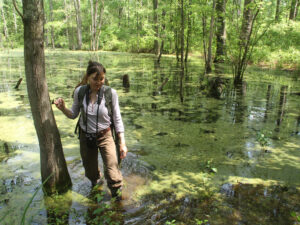
Public hearing will determine the fate of many NC wetlands
June 26th 2025

Clayton gets first official trash-trap cleanout
June 25th 2025
